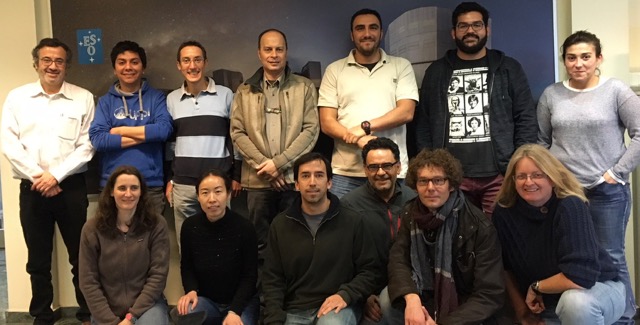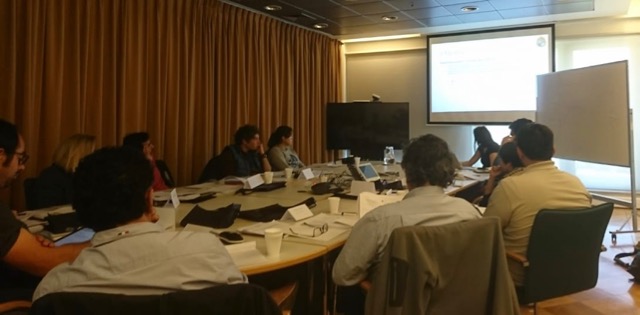Adaptive Optics Training 2020
16 de Octubre, 2023
Why developing an Adaptive Optics Training in Chile?
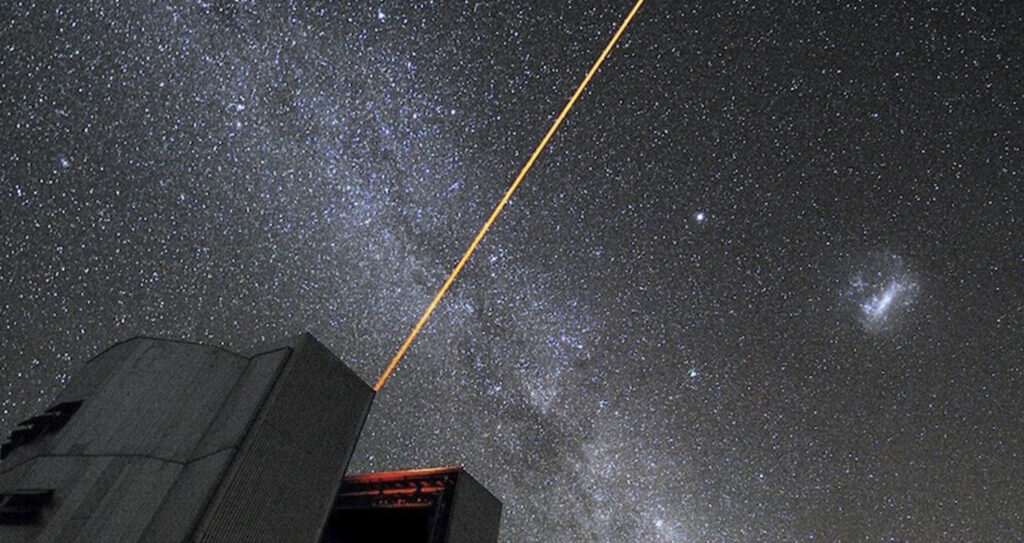
More and more instruments at big observatories in Chile are equipped with Adaptive Optics (AO) requiring their staff to understand how an AO system works in order to help producing the best observations out of it.
The training delivered by the Pontificia Universidad Católica (UC) is an introduction to AO designed for engineers and astronomers of the observatories who may have to participate in developments, commissioning, operations or maintenance of adaptive optics systems. In 2017, 2018 and 2019, the training have created the opportunity to gather participants from various obaservatories, such as European Southern Observatory, Gemini Observatory and Las Campanas Observatory.
Training goals
The participants will acquire knowledge on the AO systems, the reasons why they are needed, their design and components, as well as the challenges related to their developments nowadays and in the future. Concepts related to light, wave propagation in the visible and infra-red, wavefront aberrations and their impact on the observations (images or data) are studied. Relevant concepts of devices and technologies for the AO components are presented and compared. The participants will thus acquire the basics to enable the preliminary design of an AO system. The training also includes significant time spent in practical sessions in the laboratory and on numerical AO simulators. This is aimed at relating the learned concepts to the concrete difficulties of operating an AO system at the telescopes.
Program April-May 2020
To maximize the transfer of knowledge and the acquisition of practical abilities, this program associates learning sessions from theory with hands-on activities in smaller groups of participants.
The training includes two parts separated in 2 different weeks. The participants must attend both parts of the training.
The planned schedule for Fall 2020
- from Monday 20th to Friday 24nd April 2020
- from Monday 11th to Friday 15th May 2020.
Please contact cbechetp - at - ing.puc.cl for more information on the schedule.
Contents
Theoretical lectures:
1. Introduction to AO.
2. Optical imaging and Optics for AO.
3. Optical effects of the atmospheric turbulence.
4. Wavefront sensing and wavefront correction.
5. Laser guide stars.
6. Wavefront reconstruction.
7. AO Control.
8. AO calibration.
9. Tomographic AO.
10. Extreme AO specificities.
11. AO applications out of astronomy.
E sessions:
1. exercises
2. introduction to AO simulation tools
3. practice on AO simulatorsLaboratory sessions:
1. Introduction to the Single-conjugate AO bench.
2. Practical use of wavefront sensor, deformable mirror and rotating phase screen
3. Optical design of the AO system on the bench.
4. Modal AO correction on the bench.
5. Separation of Tip-tilt and high-order AO correctionon the bench.
Contact
AO Training Teaching staff
- Clémentine Béchet
Engineer, Engineering school École Centrale de Lyon (France); Ph.D. in Electronics and Control, École Centrale de Lyon (France). Adjoint Assistant Professor Institute for Mathematical and Computational Engineering (UC - Chile); 10 years of expertise in research in adaptive optics for the largest telescopes in the world (e.g. VLT, Gemini, EST, ELT), working for the European Southern Observatory (ESO - Germany), for Lyon Observatory (France) and now for Universidad Católica (UC - Chile). - Andrés Guesalaga
Engineer UC (Chile); Ph.D., University of Manchester (UK). Full Professor, Electrical Engineering UC (Chile). Expert in design and development of instrumentation for measurement and control, and in particular for adaptive optics and turbulence profiling. - Boris Ayancán
Electronic Engineer Universidad Austral (Chile). 10 years of professional expertise in electronics, parallel computing architectures, telecommunications and optics. Currently in charge of the adaptive optics bench at Universidad Católica (UC - Chile)
For further information and for registration, please contact : cbechetp - at - ing.puc.cl
Instituto de Ingeniería Matemática y Computacional - UC
Pontificia Universidad Católica de Chile
Edificio Hernán Briones (2o piso)
Vicuña Mackenna 4860, Macul. Santiago, CHILE
Pictures from AO training 2019
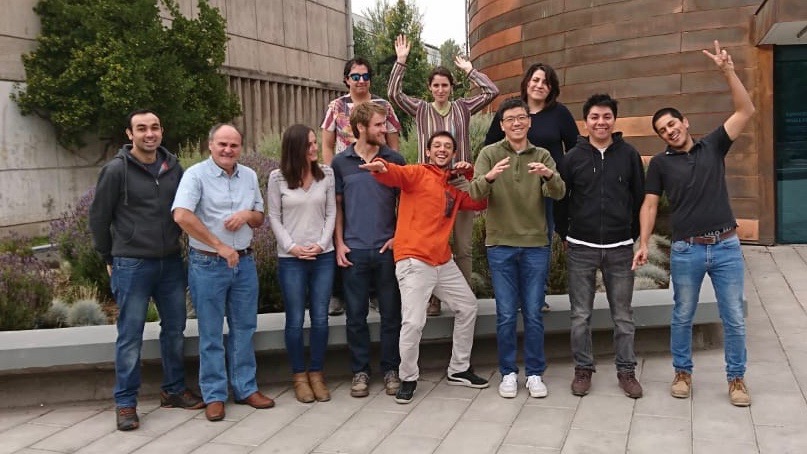
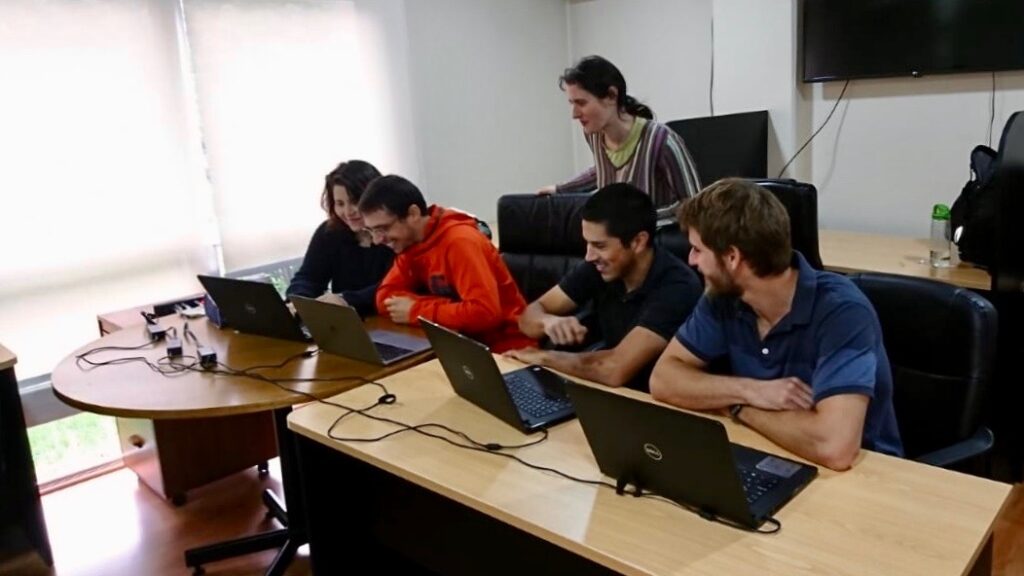
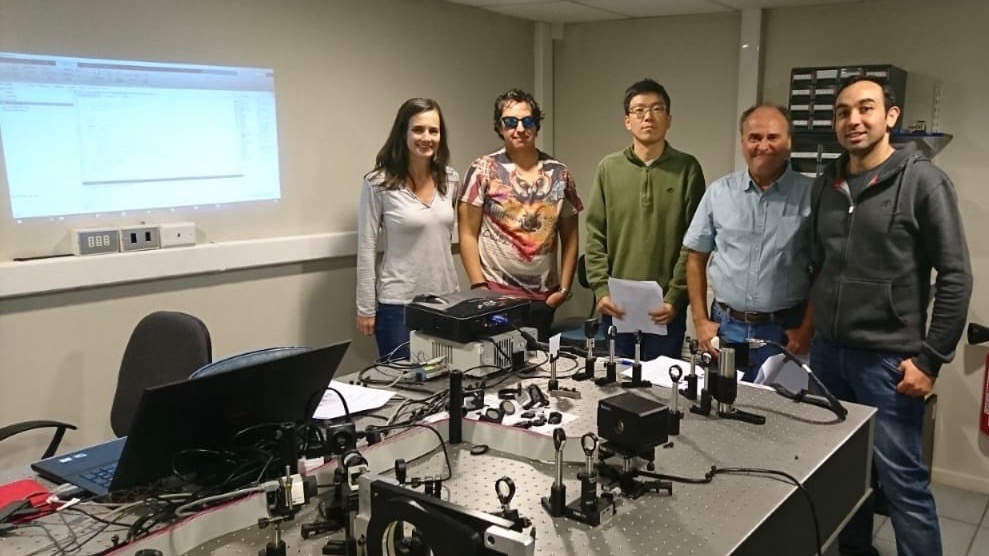
Pictures from AO training 2017-2018
